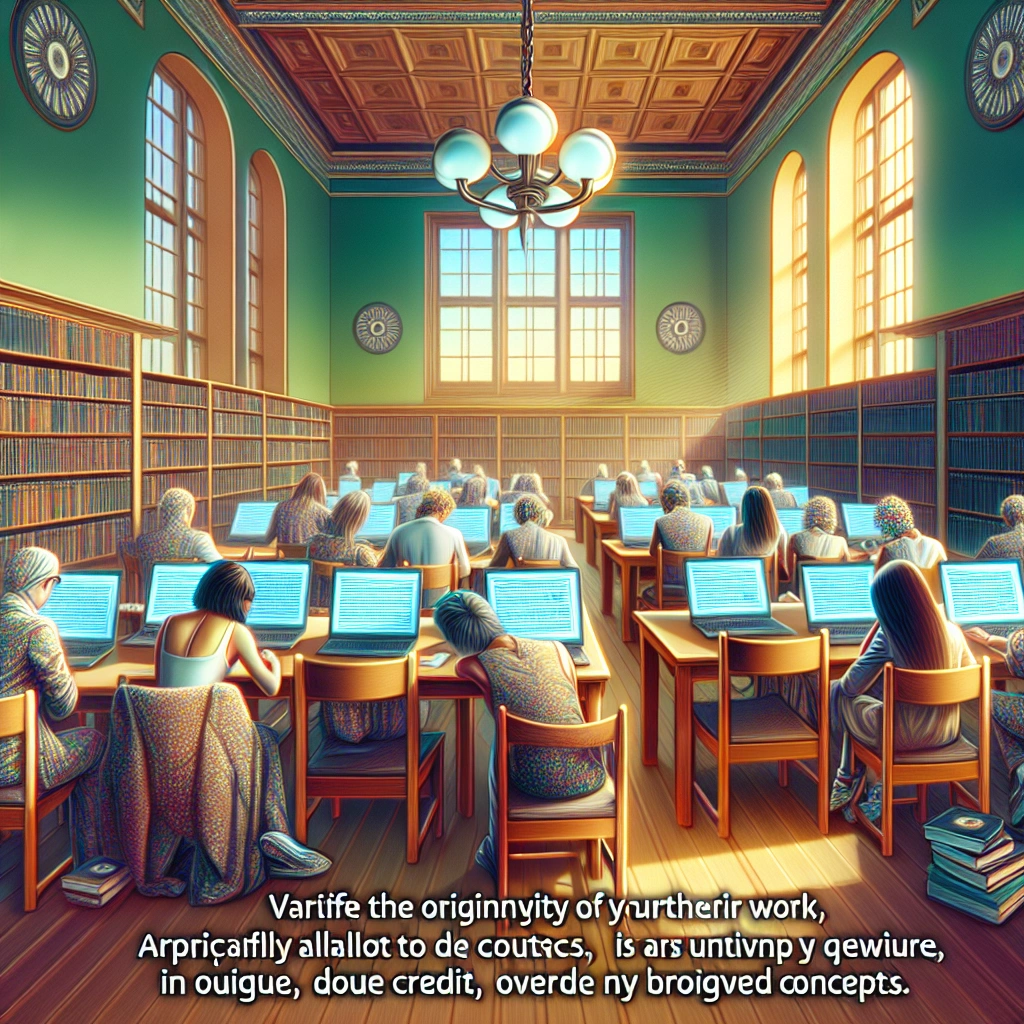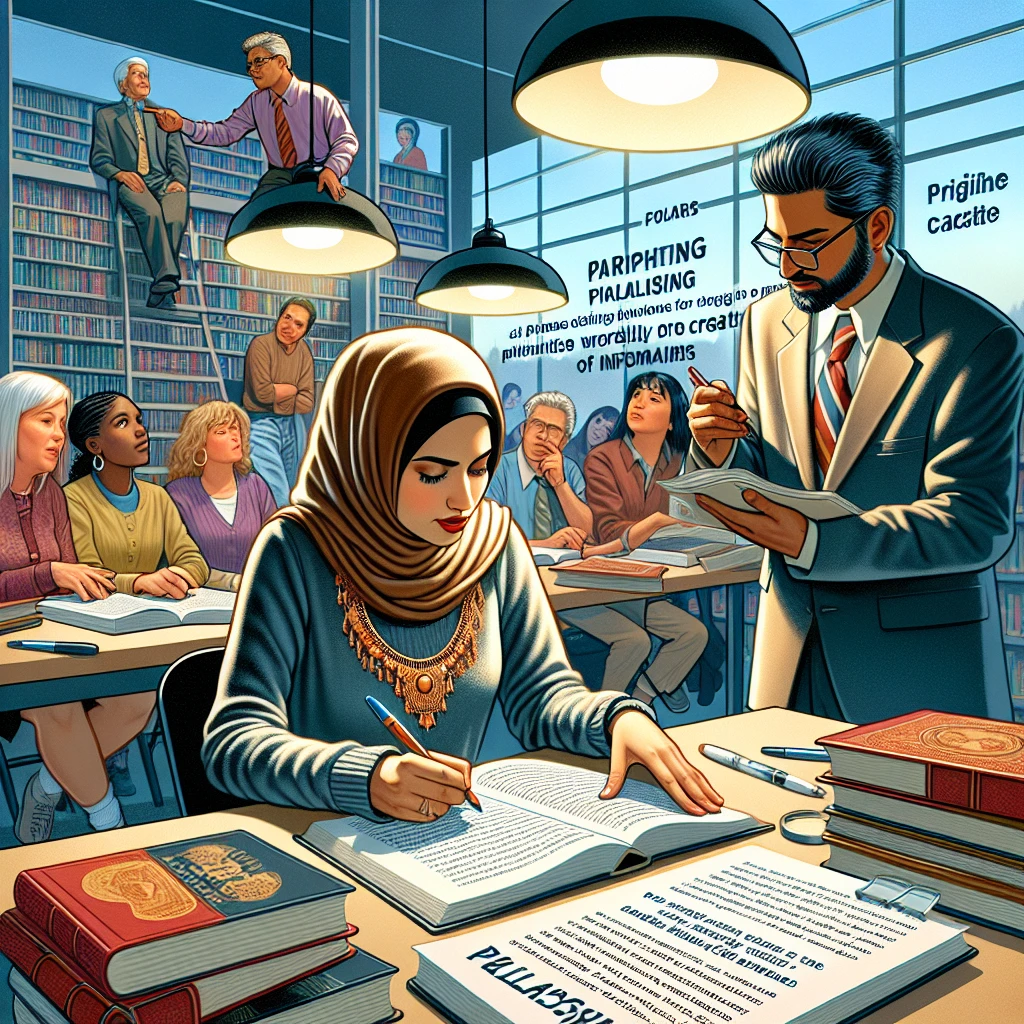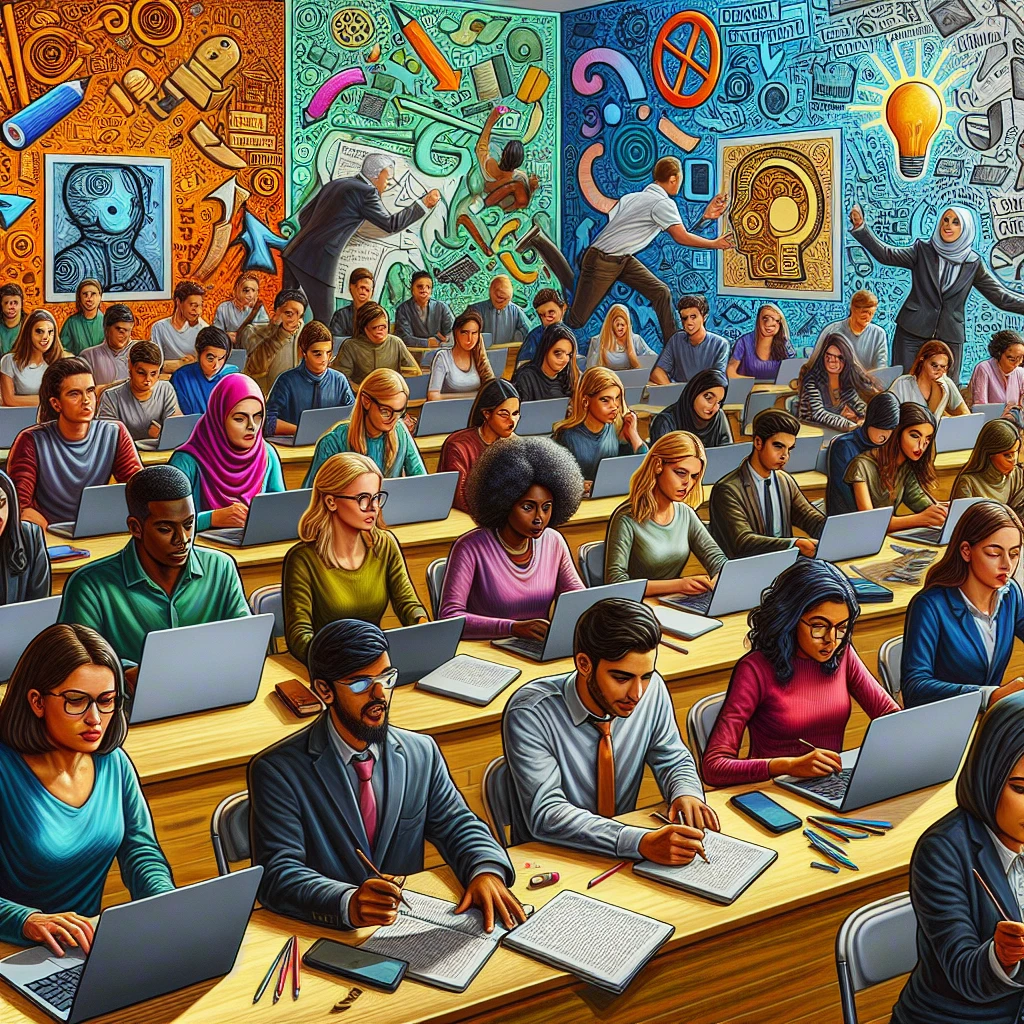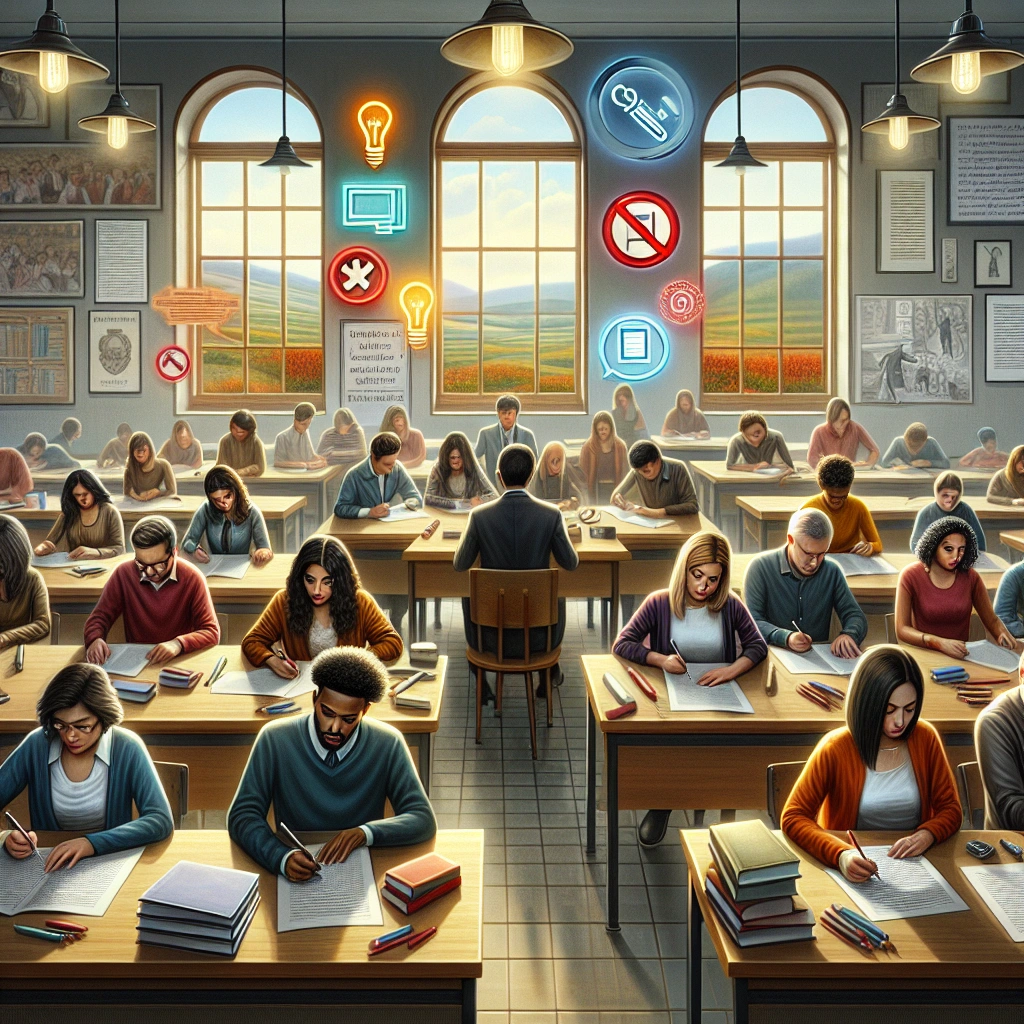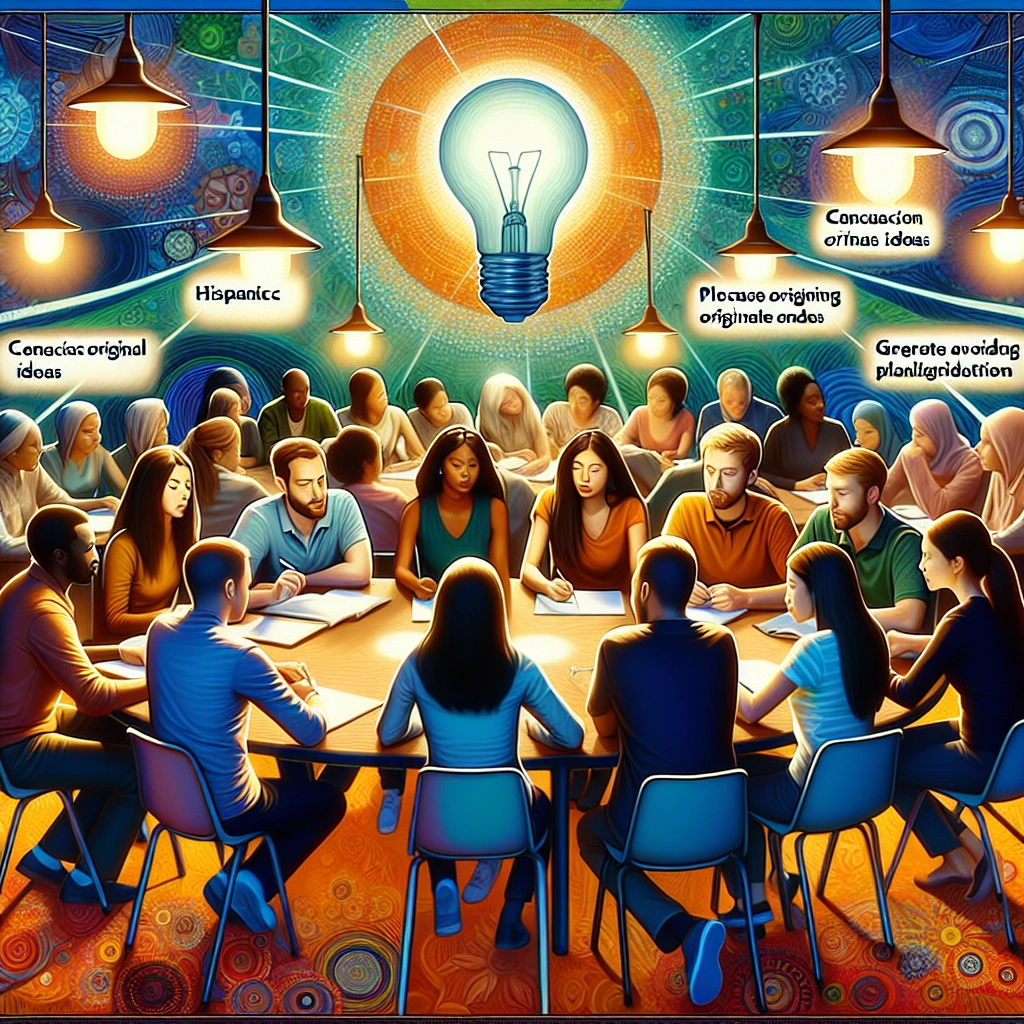Avoid Plagiarism: How To Avoid It While Copying


Plagiarism is the act of using someone else’s work or ideas without giving them proper credit. It is important to avoid plagiarism because it is a breach of academic integrity and represents substandard scholarship.
Common misconceptions about plagiarism include thinking that using a plagiarism checker saying 0% similar means no plagiarism, believing that copying only in the introduction or literature review is not plagiarism, and having misunderstandings about how to incorporate sources into a text.
Check out this Youtube video: Learn the best plagiarism removing trick for full documents and how to avoid plagiarism while copying!
How to Recognize Plagiarism
Understanding different forms of plagiarism
- Direct Plagiarism: This occurs when someone copies content word for word without proper citation.
- Self Plagiarism: When a person reuses their own work without acknowledging or referencing it.
- Mosaic Plagiarism: This form involves mixing various sources to create a new piece without giving credit to the original authors.
- Accidental Plagiarism: When a person unintentionally neglects to properly cite or reference sources.
Tailoring content to your own voice
Tailoring content to your own voice involves creating unique and distinctive content that reflects your individual perspective and style. It’s important to strike a balance between originality and utilizing external sources by weaving their input into your personal voice.
Using proper citations and references
Using proper citations and references is essential to avoid plagiarism. When including data, quotes, or ideas from others, it’s crucial to acknowledge the original source through suitable citation styles.
Some widely used citation styles include APA, MLA, and Chicago, each with specific guidelines for formatting references and citations.
Understanding Copyright Laws
To start off, understanding copyright laws is crucial in navigating the legal landscape of content usage. The concept of fair use is a fundamental aspect of copyright that allows for the limited use of copyrighted material without acquiring permission.
It is commonly applicable in scenarios involving commentary, news reporting, scholarly reports, and criticism. Additionally, recognizing public domain content is equally essential.
This pertains to creative materials not protected by intellectual property laws, thereby enabling unrestricted usage. Lastly, obtaining licensing and permissions for use is integral when utilizing copyrighted work.
This process involves identifying the type of permission or license required, such as Creative Commons licenses, and ensuring adherence to the stipulated terms of use.
At the core, fair use serves as a vital provision within copyright laws, permitting the usage of copyrighted material for specific purposes. Furthermore, understanding public domain content is crucial.
It refers to creative materials not protected by intellectual property laws, allowing for their unrestricted utilization. Additionally, navigating licensing and permissions for use is indispensable.
This entails identifying the kind of permission or license necessary for the intended usage of copyrighted work.
| Type of License | Permissions |
|---|---|
| CC-BY | Distribution, Remix, Adaptation, Commercial use with attribution |
| CC-BY-SA | Same as CC-BY along with share-alike requirement |
| CC-BY-ND | Distribution of unaltered content with attribution |
| CC-BY-NC | Distribution for non-commercial purposes with attribution |
| CC-BY-NC-SA | Distribution for non-commercial purposes with attribution and share-alike requirement |
| CC-BY-NC-ND | Distribution for non-commercial purposes, unaltered content with attribution |
By grasping the intricate details of copyright laws, individuals and organizations can ensure compliance with regulations while responsibly using copyrighted material. This comprehensive understanding can safeguard against potential legal complications and promote ethical and legal content utilization.
Techniques for Avoiding Plagiarism While Copying
Summarizing and paraphrasing effectively
To avoid plagiarism while copying, it’s essential to master the art of summarizing and paraphrasing effectively. This involves carefully reading the original text, highlighting key points, and then rewriting the content in your own words.
It’s crucial to maintain the original meaning while expressing it in a different way to avoid direct replication.
Employing quotation marks when necessary
Another technique for avoiding plagiarism is to employ quotation marks when necessary. Whenever you use a direct quote from a source, make sure to enclose the quoted text within quotation marks.
This clearly indicates that the words are not your own and gives credit to the original author. Quotation marks are vital in distinguishing direct quotes from your original content.
Putting ideas into your own words
Putting ideas into your own words is a fundamental practice for evading plagiarism. When incorporating information from external sources, it’s important to rephrase the concepts in a unique manner.
This demonstrates a thorough understanding of the material while preventing verbatim use of the original text, thereby upholding academic integrity.
| Effective Techniques for Avoiding Plagiarism |
|---|
| 1. Summarizing and paraphrasing |
| 2. Proper use of quotation marks |
| 3. Expression of ideas in original words |
These techniques, when applied diligently, not only prevent plagiarism but also enhance the credibility of your work by demonstrating a comprehensive grasp of the subject matter.
Best Practices for Properly Citing Sources
Utilizing citation styles such as MLA, APA, or Chicago: When citing sources, it’s crucial to adhere to specific citation styles such as MLA, APA, or Chicago. For example, in APA style, in-text citations use the author-date method, while MLA typically employs the author-page method.
Each citation style has its unique set of guidelines, and by following them accurately, one can avoid plagiarism when borrowing content.
Including in-text citations and bibliographies: In-text citations and bibliographies are essential components of proper source citation. In-text citations give credit to the original source within the body of the text, while bibliographies provide a comprehensive list of all sources referenced in the work.
These elements not only show respect for the original creators but also demonstrate the depth of research conducted.
Differentiating between primary and secondary sources: It’s vital to differentiate between primary and secondary sources when citing. Primary sources are original materials or evidence, while secondary sources analyze, interpret, or comment on primary sources.
By appropriately distinguishing between the two, individuals can ensure the accurate representation of the information they present and avoid misattribution.
Software Tools for Detecting Plagiarism
Overview of plagiarism detection software
Plagiarism detection software utilizes advanced database technology to compare submitted text with existing content, identifying any matches. These tools are widely employed by academic institutions to scrutinize student assignments.
Moreover, commercial plagiarism checkers are available for individuals to review their work before submission.
Using online platforms to check for originality
Online platforms offer accessible and user-friendly interfaces for individuals to conveniently check the originality of their work. For instance, platforms like Turnitin™ and Copyleaks Plagiarism Checker are widely utilized to compare content against a vast database to ensure its uniqueness.
Understanding the limitations and accuracy of these tools
It’s crucial to recognize that while plagiarism detection software is highly beneficial, it’s not foolproof. These tools may produce false positives, which necessitate further investigation.
Moreover, they may have limitations in detecting complex instances such as paraphrasing and the use of synonyms, leading to potential false negatives.
Ethical Implications of Plagiarism
Impact on academic and professional reputation
Plagiarism can tarnish one’s academic and professional reputation, leading to loss of trust and credibility from peers, mentors, and employers. It undermines the hard work and integrity of individuals, impacting their potential for career growth and academic recognition.
Potential legal consequences
The potential legal consequences of plagiarism are serious and can include copyright infringement or facing civil and criminal charges. Plagiarism can lead to lawsuits and even imprisonment, especially in cases of substantial intellectual property theft.
Ethical considerations for content creators
Content creators must prioritize ethical considerations by verifying information sources, avoiding plagiarism at all costs, and maintaining transparency and disclosure. This involves citing sources properly, creating original content, and ensuring content does not promote hate speech or offensive material.
Case Studies of Plagiarism in History
Highlighting infamous instances of plagiarism
- George Harrison, known for “My Sweet Lord,” was sued for plagiarism of The Chiffons’ “He’s So Fine.”
- Melania Trump faced accusations of plagiarizing Michelle Obama’s speech at the Republican National Convention in 2016.
Examining the consequences for the perpetrators
- George Harrison faced a lawsuit for his song’s similarity to The Chiffons’ work.
- Melania Trump’s speech plagiarism caused a significant media uproar and damaged her reputation.
Lessons learned from historical cases
- Plagiarism in history underscores the importance of original creative work.
- The consequences of historical plagiarism cases showcase the need for ethical and authentic content creation.
| Artist | Plagiarized Work | Consequences |
|---|---|---|
| George Harrison | “My Sweet Lord” | Lawsuit |
| Melania Trump | Speech at RNC | Media uproar |
Remember folks, stay original, and make your work great again!
The Psychology Behind Plagiarism
Understanding the motivations for copying content
Plagiarism often stems from confusion about what constitutes plagiarism, fear of failure, poor time management, and negative emotions such as anxiety and depression. Students may resort to copying content due to a lack of understanding about proper attribution, academic pressures, and personal struggles.
Addressing the fear of inadequacy and insecurity
The fear of inadequacy and insecurity can lead students to plagiarize as they may feel overwhelmed by the expectations and workload, resulting in a reluctance to take risks in their own work. Negative emotions, such as anxiety and depression, also play a significant role in fostering a mindset of insecurity and inadequacy.
Promoting originality and creativity
To counter plagiarism, fostering a culture of creativity, building confidence in students’ writing, offering support to manage school stress, and providing clear guidance on plagiarism and attribution are vital. Furthermore, promoting relaxation techniques and creative skill development can boost originality and reduce the tendency of students to resort to plagiarism.
Educational Initiatives for Preventing Plagiarism
Implementing plagiarism prevention programs in schools
To prevent plagiarism in schools, implementing specialized programs and workshops that educate students on the importance of original work, proper citation, and intellectual property rights is crucial. These programs should focus on raising awareness about the negative repercussions of plagiarism and provide students with the necessary tools to produce original content.
Teaching students about proper citation methods
Teaching students about proper citation methods involves providing comprehensive guidance on formats such as MLA and APA, as well as offering practical exercises and examples to demonstrate the correct incorporation of citations within their work. By equipping students with the knowledge and resources to cite sources accurately, educators can instill a strong understanding of academic honesty and integrity.
Fostering a culture of academic integrity
Fostering a culture of academic integrity requires creating an environment that prioritizes honesty, respect, and ethical behavior. This can be achieved through promoting open discussions about the value of originality, encouraging students to take pride in their authentic contributions, and establishing clear policies and consequences for academic dishonesty.
By emphasizing the significance of integrity, institutions can cultivate a community where plagiarism is unacceptable and academic honesty is upheld.
Inconsistencies in Plagiarism Policies
Examining varying definitions of plagiarism
Plagiarism is defined in various ways across different educational institutions. For instance, at Princeton, it refers to the intentional use of someone else’s language or ideas without proper acknowledgment, while at Brown, it involves passing off someone else’s ideas as one’s own.
These discrepancies in definitions create confusion and contribute to the overall inconsistency in plagiarism policies.
Critiquing the enforcement of plagiarism rules
The enforcement of plagiarism rules lacks consistency and effectiveness. Educational institutions often differ in their approach to detecting and addressing plagiarism, leading to unequal treatment of students.
Additionally, the enforcement mechanisms sometimes fail to provide adequate support for students in understanding and avoiding plagiarism.
Addressing the lack of standardized consequences
There exists a lack of standardized consequences for plagiarism across academic settings. The absence of uniform penalties results in varied outcomes for similar cases of plagiarism, leading to unfairness and ambiguity in the consequences faced by students.
Standardizing consequences can help ensure fairness and transparency in addressing plagiarism.
| Institution | Definition of Plagiarism |
|---|---|
| Princeton | Deliberate use of someone else’s language, ideas, or original material without acknowledgment |
| Brown | Passing off someone else’s ideas as one’s own |
The inconsistencies in defining and enforcing plagiarism rules, coupled with the absence of standardized consequences, create a challenging environment for both students and educational institutions. Addressing these inconsistencies is crucial in promoting fairness and integrity in academic settings.
Debunking Common Excuses for Plagiarism
Challenging the notion of time constraints
Plagiarism is never an honest mistake. It is deliberate and often stems from laziness or the desire to take shortcuts.
Time constraints may be a convenient excuse, but acknowledgment of sources and citations can be done efficiently and effectively. Ignoring it only undermines the importance of original work, which is vital in academic and professional settings.
Refuting the excuse of lack of knowledge
The excuse of lack of knowledge is a common cover-up for plagiarism. However, it’s an invalid defense.
With the abundance of resources and information on how to properly cite sources, claiming ignorance is simply unacceptable. Understanding the basic principles of referencing and citations is a fundamental expectation in academic and professional environments.
Addressing the pressure to excel academically
The pressure to excel academically can indeed be overwhelming, but it’s crucial to understand that resorting to plagiarism is not the solution. Excellence is achieved through hard work, critical thinking, and originality.
Encouraging a culture of integrity and ethical conduct in academia can alleviate the undue stress and ensure that students take pride in their authentic work.
| Common Excuses for Plagiarism | Rebuttal |
|---|---|
| “I don’t have time to cite sources.” | Acknowledging sources can be done efficiently. |
| “I didn’t know I was plagiarizing.” | Understanding proper referencing is fundamental. |
| “I feel too pressured to produce original work.” | Excellence is achieved through hard work and originality. |
Plagiarism is a serious ethical violation that undermines the principles of academic and professional integrity. Challenging and debunking common excuses for plagiarism is essential in fostering a culture of academic honesty and originality.
It’s imperative to hold individuals accountable, promote education on proper citation methods, and emphasize the value of authentic, original work.
Encouraging Originality While Embracing Influence
How to draw inspiration without copying
Drawing inspiration without copying involves acknowledging the work of others and leveraging it to spark new ideas. One way to achieve this is through analyzing different artistic techniques and adapting them to create a unique style.
Additionally, exploring various color combinations, experimenting with different textures, and incorporating diverse shapes can also lead to original artwork. By embracing a blend of influences and infusing personal creativity, one can develop a distinctive artistic expression while avoiding direct replication.
Honoring the work of others while maintaining originality
Honoring the work of others while maintaining originality encompasses acknowledging the influence of renowned artists without simply replicating their creations. This can be achieved by paying homage to their style or technique while infusing personal flair and perspective into the artwork.
Moreover, giving credit to the sources of inspiration and striving to add a fresh interpretation to existing concepts can be instrumental in maintaining originality while respecting the contributions of others.
Balancing the fine line between influence and imitation
Balancing the fine line between influence and imitation involves leveraging inspiration from other artists while ensuring that the resulting work is distinctive and original. Embracing influence entails learning from the techniques and styles of accomplished artists, while imitation refers to replicating their work.
By utilizing inspiration as a springboard for originality and infusing personal creativity into artistic endeavors, creators can strike a harmonious balance between drawing influence and avoiding direct imitation.
| Comparison | Influence | Imitation |
|---|---|---|
| Definition | Drawing inspiration to enhance creativity | Exact replication of others’ work |
| Approach | Adaptation and personalization | Copying without adding originality |
| Impact | Fosters innovation and unique artistic expression | Limits creativity and stifles originality |
Drawing inspiration without copying, honoring the work of others while maintaining originality, and balancing the fine line between influence and imitation are pivotal for fostering creativity and authenticity in art. By embracing diverse influences, acknowledging the contributions of renowned artists, and infusing personal creativity, creators can cultivate a distinct artistic voice while paying respectful homage to their sources of inspiration.
The Role of Editors and Proofreaders in Preventing Plagiarism
Ensuring originality in published content
Editors and proofreaders play a crucial role in ensuring the originality of published content. By meticulously reviewing the material, they can identify any instances of duplicate content or unattributed sources, thereby upholding the integrity of the work.
Identifying and addressing potential instances of plagiarism
Their keen attention to detail allows them to identify potential instances of plagiarism, whether intentional or inadvertent. By cross-referencing content with trusted sources and employing specialized tools, editors and proofreaders can effectively address any issues related to plagiarism before the material is published.
Upholding editorial standards for authenticity
In maintaining editorial standards, editors and proofreaders uphold the authenticity of the content. Their meticulous review process not only ensures grammatical accuracy and coherence but also guarantees that the material reflects the original thoughts and ideas of the author, guarding against any forms of misappropriation.
Collaboration and Idea Sharing Without Plagiarism
Establishing clear guidelines for collaboration
The key to establishing clear guidelines for collaboration is being open and honest while setting clear expectations. It’s crucial to share and enforce these guidelines with your team to avoid misunderstandings and conflicts.
Assessing the scope and goals of the work and defining clear roles and expectations for team members is essential for effective collaboration.
Promoting the exchange of ideas while respecting ownership
To promote the exchange of ideas while respecting ownership, it’s important to create a safe and supportive environment where team members feel comfortable sharing their thoughts. Encouraging specific and detailed idea sharing helps others understand the recommendations clearly.
Moreover, it’s crucial to cultivate an ownership mindset where team members feel empowered to contribute their ideas and make decisions that lead to positive outcomes.
Nurturing a supportive and ethical creative community
Nurturing a supportive and ethical creative community can be achieved by defining a clear vision and goals, modeling sustainable and ethical practices, and integrating sustainability and social responsibility. Joining existing platforms, collaborating with new partners, and building trust also play a crucial role in fostering a supportive and collaborative community of creative individuals.
| Actions | Importance |
|---|---|
| Being open and honest | Ensures clarity |
| Setting clear expectations | Avoids conflicts |
| Creating a safe environment | Encourages idea sharing |
| Cultivating an ownership mindset | Empowers team members |
| Defining vision and goals | Establishes direction |
| Modeling sustainable practices | Promotes ethical behavior |
| Collaborating with partners | Builds a supportive community |
By embodying these practices, the creative community can thrive while maintaining ethical standards and respecting individual ownership.
Recommended Amazon Products for Avoiding Plagiarism While Copying
Here’s a curated list of products that can help you avoid plagiarism while copying with ease. These recommendations are based on functionality, price, and reviews.
Plagiarism Checker X
Plagiarism Checker X is a powerful software that can help you detect any instances of plagiarism in your work. It’s user-friendly and provides accurate results. Check out Plagiarism Checker X today for the best results!


Quoting, Paraphrasing, and Summarizing (2nd Edition) by L. Lennie Irvin
This book is a valuable resource for understanding how to properly quote, paraphrase, and summarize content without plagiarizing. It provides practical tips and examples for effective usage. Check out Quoting, Paraphrasing, and Summarizing (2nd Edition) today for the best results!


The Bluebook: A Uniform System of Citation, 20th Edition
This comprehensive guide outlines rules for legal citation and is widely used in the legal profession. It provides detailed guidelines for proper citation practices. Check out The Bluebook: A Uniform System of Citation, 20th Edition today for the best results!


Grammarly Premium
Grammarly Premium is a reliable tool that helps improve the overall quality of your writing by checking for grammar, spelling, and punctuation errors. It also detects instances of plagiarism and provides suggestions for improvement. Check out Grammarly Premium today for the best results!


MLA Handbook, 8th Edition
The MLA Handbook is a trusted resource for writers and students, offering guidelines for formatting and citing sources in MLA style. It provides clear and practical advice for citing various types of sources. Check out MLA Handbook, 8th Edition today for the best results!


Pros and Cons of Recommended Products










| Product | Pros | Cons |
|---|---|---|
| Plagiarism Checker X | User-friendly interface, Accurate results | Paid software |
| Quoting, Paraphrasing, and Summarizing (2nd Edition) | Practical tips and examples, In-depth coverage | Limited to book format |
| The Bluebook: A Uniform System of Citation, 20th Edition | Comprehensive citation rules, Widely recognized | Specific to legal citation |
| Grammarly Premium | Grammar and style improvement, Plagiarism detection | Requires subscription |
| MLA Handbook, 8th Edition | Clear formatting guidelines, Authoritative source | Specific to MLA style |
Top Recommended Product for Avoiding Plagiarism While Copying
If you’re looking for the best solution for avoiding plagiarism while copying, we highly recommend Grammarly Premium. Grammarly Premium offers a comprehensive set of tools for improving your writing and detecting instances of plagiarism, making it an ideal choice for maintaining originality and integrity in your work.


Ready to improve your writing and avoid plagiarism? Check out Grammarly Premium today for the best results!


Conclusion
It is crucial to cite all sources properly when copying to avoid plagiarism. By summarizing key strategies, such as using quotation marks and providing accurate citations, individuals can maintain originality and integrity in their work while avoiding accusations of plagiarism.
Reinforcing the significance of originality and integrity ensures that individuals understand the ethical and moral implications of plagiarizing others’ work. It is important to emphasize the value of producing one’s own original content and respecting the intellectual property of others.
Encouraging ongoing education and awareness around plagiarism prevention can help individuals stay informed about the best practices and techniques for avoiding plagiarism. By staying updated on the latest tools and resources for plagiarism prevention, individuals can actively contribute to creating a culture of academic honesty and integrity.





